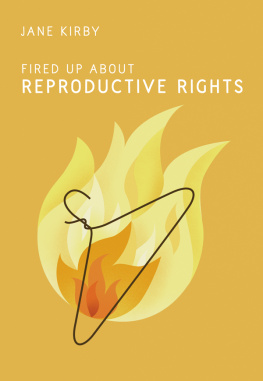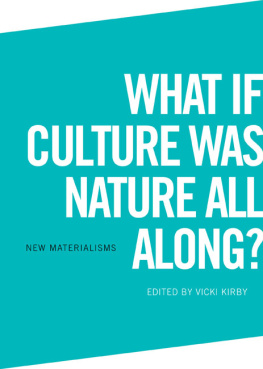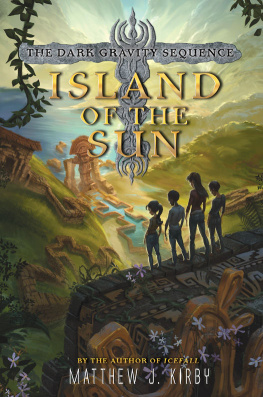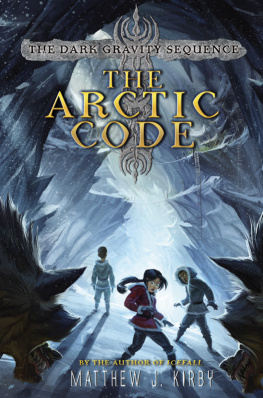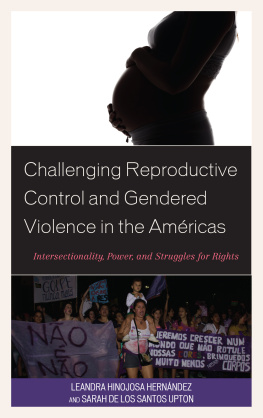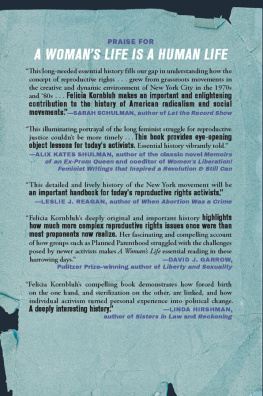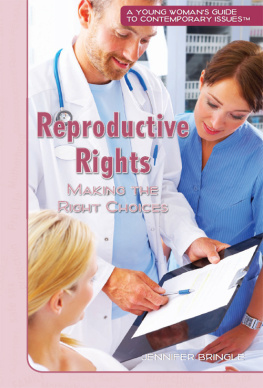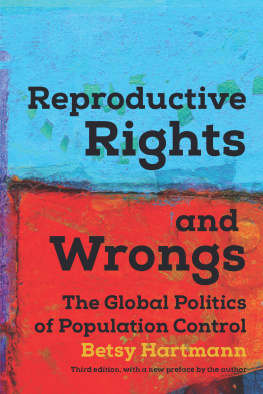Jane Kirby does a great job critically engaging historical and contemporary concerns of the reproductive rights movement in this primer, and shows that the next generation is interested in pushing the conversation forward in an intersectional way.
KAREN STOTE, author of An Act of Genocide: Colonialism and the Sterilization of Aboriginal Women in Canada
A fascinating exploration of the myths and facts surrounding reproductive justice and abortion. Something every activist needs to have in their back pocket.
COLLEEN MACQUARRIE, professor of psychology, University of Prince Edward Island, and academic activist
Kirby helps to move us beyond the privileged concept of being pro-choice by framing access to contraception and abortion as human rights issues that are deeply connected to poverty, racism, cis-sexism, and heterosexism.
JESSICA SHAW, professor of social work and abortion researcher
Kirbys book explains in simple language the connection between reproduction and larger systems of oppression. It is an important contribution to literature on reproductive rights.
BOMA BROWN, founder, Support Network for Indigenous Women & Women of Colour (SNIWWOC)
Kirby provides an engaging and inspiring account of the reproductive rights movement. Her book pays tribute to women of colour activism and acknowledges the challenges and contradictions of feminist organizing. It will be useful for educators and activists, helping to build feminist solidarity beyond the concept of individual rights and toward notions of justice and responsibility.
RUTHANN LEE, community organizer and professor
Kirbys thorough and accessible guide contextualizes todays reproductive issues in historical efforts to secure reproductive rights and reproductive justice. Shedding light on the social justice movements that continue to shape this struggle, Fired Up about Reproductive Rights provides a clear and insightful introduction to a multifaceted and pressing issue.
CYNTHIA SPRING, co-founder of GUTS magazine
Fired Up about Reproductive Rights brilliantly untangles complexity and presents a clear and accessible primer on reproductive politics. This book is a must-read for young people.
ARDATH WHYNACHT, youth advocate and professor of sociology
FIRED UP ABOUT
REPRODUCTIVE RIGHTS
JANE KIRBY
Between the Lines
Toronto
Fired Up about Reproductive Rights
2017 Jane Kirby
First published in 2017 by Between the Lines
401 Richmond Street West
Studio 281
Toronto, Ontario M5V 3A8
Canada
1-800-718-7201
www.btlbooks.com
All rights reserved. No part of this publication may be photocopied, reproduced, stored in a retrieval system, or transmitted in any form or by any means, electronic, mechanical, recording, or otherwise, without the written permission of Between the Lines, or (for photocopying in Canada only) Access Copyright, 56 Wellesley Street West, Suite 320, Toronto, Ontario, M5S 2S3.
Every reasonable effort has been made to identify copyright holders. Between the Lines would be pleased to have any errors or omissions brought to its attention.
Library and Archives Canada Cataloguing in Publication
Kirby, Jane, 1986, author
Fired up about reproductive rights/Jane Kirby.
(Fired up)
Includes index.
Issued in print and electronic formats.
ISBN 978-1-77113-209-1 (softcover).ISBN 978-1-77113-210-7 (EPUB).
ISBN 978-1-77113-211-4 (PDF)
1. Reproductive rights. 2. Sexual rights. 3. Birth controlSocial aspects. 4. ContraceptionSocial aspects. 5.Womens rights. 6. Feminism. I. Title.
HQ766.K57 2017305.42C2016-907420-X
C2016-907421-8
Cover design by Jennifer Tiberio
Cover illustration by Jack Dylan
Text design by Gordon Robertson
We acknowledge for their financial support of our publishing activities the Government of Canada through the Canada Book Fund, the Canada Council for the Arts, which last year invested $153 million to bring the arts to Canadians throughout the country, and the Government of Ontario through the Ontario Arts Council, the Ontario Book Publishers Tax Credit program, and the Ontario Media Development Corporation.

ACKNOWLEDGEMENTS
Writing even this short book was an enormous undertaking that would not have been possible without the generosity and support of a good number of people:
The entire team at Between the Lines. Particularly my editor Amanda for her insight, patience, and guidance through the process, and Tilman for his invaluable copyediting that contributed to a much clearer and more accessible manuscript.
My anonymous readers, whose feedback was vital in improving and shaping the final drafts of the book. A particular thank you to Jessica Shaw, whose feedback and conversation helped me overcome some difficult tensions I was facing in the writing process.
Melissa Marie (emmy) Legge, Elaine, Doulton, April, and Jenna for their encouragement and feedback on earlier drafts of the book. Melissa B. and Doulton for agreeing to share their thoughts in an interview.
My partner, David, for supporting me throughout the writing process and cooking me dinner on late nights. To my family for their unwavering support (sometimes even in the face of political differences), and especially to my mom, for being a supporter of all my writing projects, my faithful proofreader, and my first feminist influence.
All those working in the fight for social justice, particularly those I have been privileged enough to work alongside, for sharing your courage, knowledge, and belief that we can do better.
INTRODUCTION
I grew up in a Catholic family in the suburbs of Toronto, where I went to a religious high school and attended church regularly. So my access to education on sexual and reproductive health was rather limited. I vividly remember one male high school religion teacher. He told us that girls and women who had abortions were not only selfish, they were immoral. I also remember what my gym teacher told us. She was forced to say one thing as part of the Catholic high school curriculum, but she said that if we ever found ourselves in trouble, she would give us different advice as our friend. It was no secret that trouble, for a Catholic teenage girl, meant pregnant.
This created a rather difficult situation for anyone who got pregnant. Have an abortion and be forced to live with guilt. Or keep the child and be seen forever as someone who got herself in trouble. No one gave us information about condoms or the pill. The point was to keep us from having sex at all. The boys, for some reason, were given no such instruction.
To her credit, my gym teacher made an important acknowledgement. Sometimes the rules of the establishment dont really fit with the reality of our lives. Of course many of us did have sex as teens. And, in an environment where birth control was a taboo, some got pregnant. The school system was not too supportive of young single mothers. Those who went through with their pregnancies almost always dropped out of school. Their conspicuous absence would be discussed in hushed tones behind locker doors. But at my high school, at least, abortion was not something you talked about. Beyond rumours, you never really knew who might have had one.
Despite feeling a good deal of confusion, born of guilt, I could see the consequences that pregnancy had on my peers. That convinced me early on that for some people abortion was a necessary choiceif not one to be taken lightly. My gym teacher must have agreed. She recognized that things were not always clear-cut. It is difficult to go to school while raising a newborn. Few schools have a daycare, allow for breastfeeding, or offer flexible schedules. So many people might choose to have an abortion in order to continue with their education. There are many different reasons someone might choose to have an abortion. They cant afford to raise a child. They want to pursue a career. They dont want a relationship with the man who got them pregnant. For health reasons or for fears for the health of the child. To better take care of children they already have. There are as many good reasons for a woman to have an abortion as there are women. In any of these circumstances, the inability to access an abortion might have long-term negative consequences on their lives.
Next page
